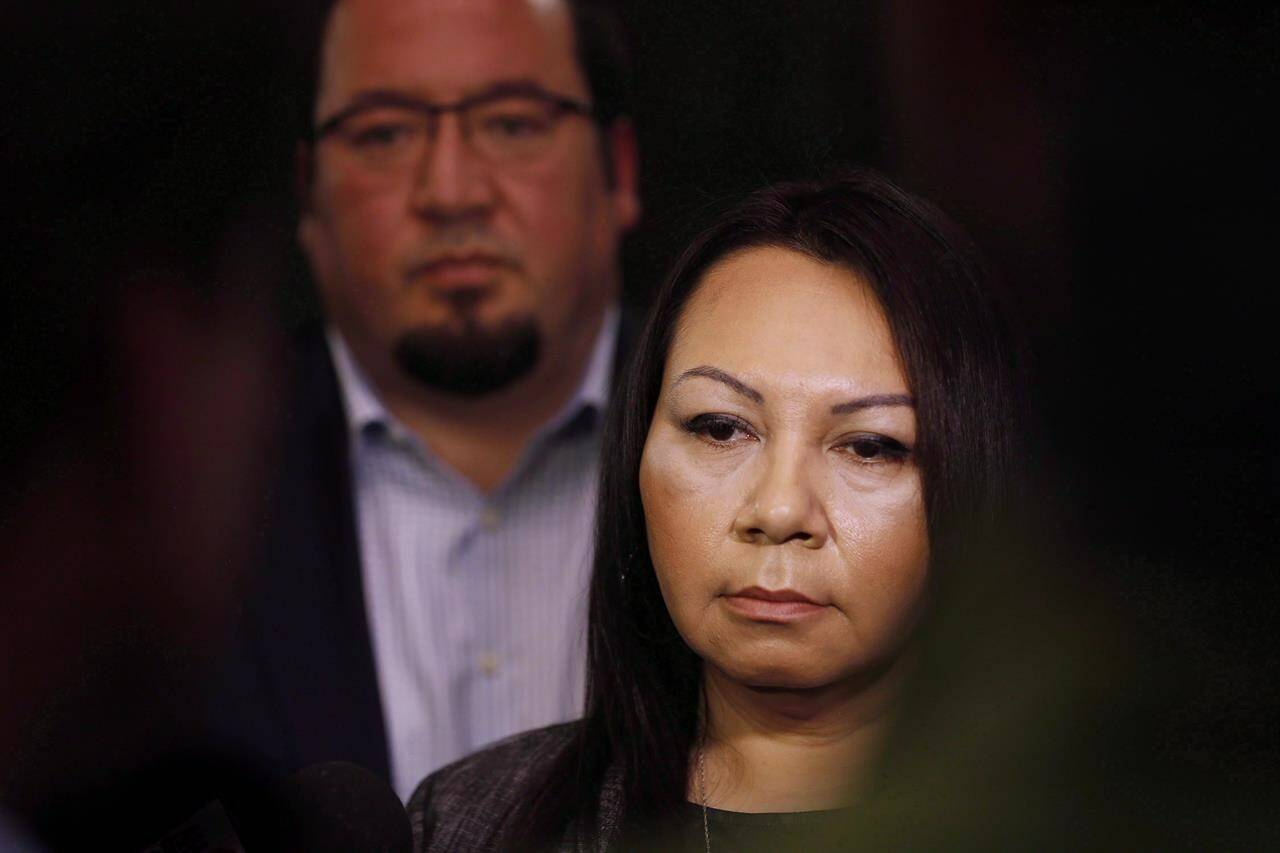More than a year after Sheila North unsuccessfully ran to lead one of Manitoba’s largest First Nations political organizations, the Cree leader and journalist is ready to try again.
The Assembly of Manitoba Chiefs is preparing to host a byelection later this month to fill its top position after it removed Arlen Dumas as grand chief over harassment allegations, which he has denied.
Elders and chiefs urged North to run again.
“Ultimately, it’s being asked of my community to do this,” North said in an interview. “I feel I still have enough energy to respond to the call.”
In North’s home province, and across Canada, women have long been under-represented among First Nations chiefs.
If elected, North would be the first female grand chief the Manitoba assembly has seen in its nearly 35-year history
She’s no stranger to the title of “first” — she was also elected the first female leader of the Manitoba Keewatinowi Okimakanak, an advocacy group representing northern First Nations in the province, in 2015.
North, who is from Bunibonibee Cree Nation in northern Manitoba, held that position until 2018. She then launched a campaign to become the Assembly of First Nations national chief and finished as runner-up to Perry Bellegarde. Had she won, she would have been the group’s first female national chief — a title now held by RoseAnne Archibald after her election win last year.
North, who was most recently a broadcaster with CBC Manitoba, said she’s keenly aware she’s running at a time when the reputation of the Manitoba assembly is being questioned. But she hopes to bring back a sense of unity between chiefs, staff and the grassroots.
“I can help with restoring the reputation that it had of being inclusive and protective of all people and advocating for all people, while not harming anyone,” she said.
In the years since North last held a grand chief title, the number of female chiefs has gone up slightly in Manitoba, but women are still under-represented. Out of the 63 First Nations in the province, 11 are run by women.
Canada-wide, the number of women occupying these roles in the last 15 years has virtually stayed the same, said Cora Voyageur, a sociology professor at the University of Calgary and a member of the Athabasca Chipewyan First Nation in Alberta.
Voyageur’s research focuses on tracking the number of women who are chiefs.
“There was between 15 and 18 per cent of the chiefs being women, and that’s been pretty constant over the last 15 years or so,” she said.
She said any female politicians who choose to do this work “have a hard road to hoe.”
This was seen this past summer when the Assembly of First Nations executive council suspended Archibald while it launched an investigation into four complaints against her by staff. Archibald said she was suspended for trying to investigate corruption within the organization and called for a forensic audit. Chiefs ultimately decided to reinstate her.
Voyageur said it was heartbreaking to watch how those events unfolded.
Indigenous Services Canada said from 2012 to 2022, the number of female chiefs has gone up to 24 per cent from 18 per cent and the number of female band council members has risen to 31 per cent from 29 per cent. It says the numbers are an estimate based on what’s reported by electoral officers and does not include First Nations councils that govern themselves outside the Indian Act.
Many First Nations communities are matriarchal and were historically governed by women, but some say colonization and the Indian Act disrupted these ways.
“I think that there’s been the attitude or thinking that leadership is only for men … it stems from colonization and the way that all unfolded in our country. Our women were pushed to the back rather to be seen and not heard,” said North.
She added male and female leaders are trying to correct this imbalance.
In the summer, the Nisichawayasihk Cree Nation in northern Manitoba elected its first woman as chief.
Angela Levasseur decided to take a break from her burgeoning law career to run after community members and elders encouraged her.
In the colonial chief-and-council governance system, Levasseur is considered the first. But she says in a historical context, there have been many female leaders before her.
“We were always the leaders as women. In order for our communities to heal, and in order for Indigenous people to move forward in a good way, we need to restore the balance.”
Since being elected, Levasseur has heard from other First Nations women interested in running for chief or council.
“I would strongly encourage them to go for it — to not be afraid, to have courage and to call upon the wisdom of our grandmothers and our ancestors to support them.”
—Brittany Hobson, The Canadian Press
RELATED: Ancestral roots: Indigenous women, girls’ health report highlights hurdles, traditions

